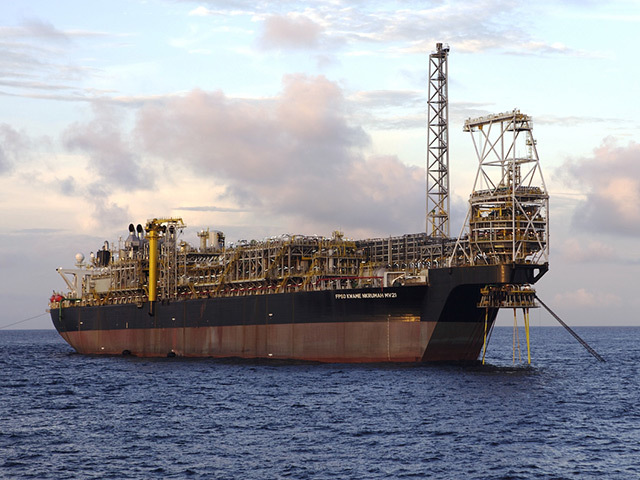
While Kosmos Energy is working on LNG and in the Gulf of Mexico, it is Ghana’s Jubilee field that will propel the company this year.
Operator Tullow Oil will start up two more producing wells on the main part of Jubilee in the near future, with a water injector starting up in the third quarter. Then, Jubilee South East will start from two producer wells around mid year, with a water injector starting up in 2024.
As a result, Jubilee should reach 110,000 barrels per day by the end of the year, Kosmos CEO Andy Inglis said today.
The executive said the field had around 1 billion barrels of oil equivalent recoverable, of which less than 40% had been recovered thus far.
“We’ve got better knowledge of those wells [on Jubilee] now through the process of start up,” Inglis said. “The first well in the main field is starting up shortly. The build up to 110,000 bpd is clearly laid out and the activity set is on plan. The well rates are consistent – and slightly ahead of pre-drill estimates.”
Inglis noted that 4D seismic was driving work on the main part of the field, allowing work to focus on “unswept areas”. Meanwhile, the Jubilee South East opportunity is in untouched reservoir.
Wells on Jubilee South East will have a lower gas-to-oil ratio. “Therefore the incremental production you get from those wells, where we’re gas constrained on the facility, is important,” Inglis said. “Overall there’s a lot of opportunity.”
However, Kosmos did warn that it would see its cargo liftings slip in the second quarter to two, with an impact on cash flow. In the third quarter this should increase to four and then five in the last quarter of the year.
LNG and Equatorial Guinea
Looking further ahead, Kosmos should see more changes coming in the fourth quarter. The Phase 1 at the Tortue LNG project is due to begin producing by the end of the year, with first LNG in the first quarter of 2024.
The FPSO should arrive by mid-year, with the floating LNG (FLNG) vessel setting off at around the same time. For now, the focus at Tortue is on the deepwater subsea work, Inglis said.
Kosmos has set out a plan to market its LNG volumes independently. BP is the operator of the project and is also signed up as the offtaker. As such, Kosmos and BP are in arbitration over whether the junior partner can sell its gas elsewhere.
Inglis declined to provide an update on arbitration. He did predict the process should be completed before it begins selling the gas.
Furthermore, Kosmos will begin an infill drilling campaign in Equatorial Guinea by the fourth quarter of this year. It will spud an infrastructure led exploration (ILX) well in the first quarter of next year, on Akeng Deep.
The infrastructure at Okume is not running at full capacity, Inglis noted. No drilling has taken place in the area for the last 10 years.
There could be a “big pick up” with Akeng Deep, though. “That’s a significant prospect to tie back to infrastructure, that’s when you see a step up in production. That could be drilled and tied back in 18 months,” Inglis said. More drilling may come in Equatorial Guinea, he continued, but that would likely only come in 2025 and beyond.
